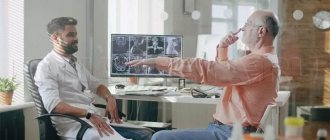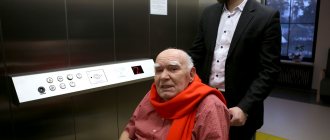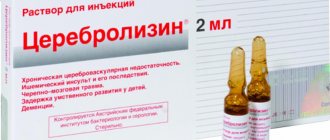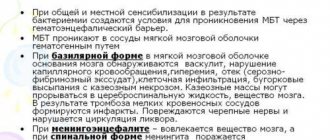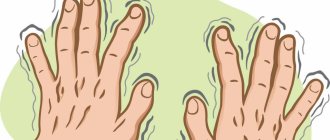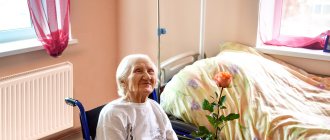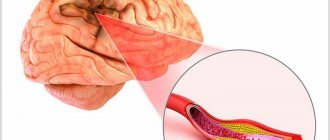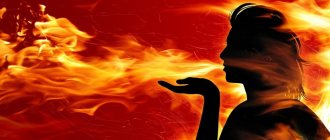- How is PLS diagnosed?
- What examinations are carried out
- Symptoms
- Forecast
- How does the disease progress?
- How to deal with PLS
- Exercises
- Speech
- Eating
Primary lateral sclerosis is a disease that affects the motor neurons in the brain that control voluntary movements. Degradation of these neurons causes gradual deactivation of spasticity and muscle weakness.
How does the disease progress?
A person may often lose their balance and fall because walking is primarily affected by PLS. Sometimes patients report pain in the neck, back and legs.
Activities such as cleaning, dressing, writing, and cooking become more problematic due to decreased mobility.
Problems arise with speech: it becomes less intelligible. This is due to the fact that due to weakness of the muscles of the pharynx, it is difficult for the patient to control the muscles of the tongue, lips and larynx.
Problems with swallowing also make eating more difficult.
In some cases, there is a loss of emotional control with unpredictable laughter or crying.
When the muscles stop obeying. What is amyotrophic lateral sclerosis?
Despite the rapid development of medical science, diseases continue to occur, the causes of which still remain a mystery. We are talking about one of these pathologies - amyotrophic lateral sclerosis - with Ekaterina Aleksandrovna Zhidkonozhkina, a neurologist at the Expert Clinic Voronezh.
- Ekaterina Aleksandrovna, amyotrophic lateral sclerosis - what kind of disease is this?
— Amyotrophic lateral sclerosis (otherwise known as ALS) is a degenerative disease of the nervous system associated with the death of motor neurons. Moreover, both central and peripheral neurons can be involved in the pathological process. It first manifests itself as paralysis of individual muscles, and subsequently one can observe complete atrophy of the entire muscle.
In the USA, Canada and some other English-speaking countries, amyotrophic lateral sclerosis is also often called Lou Gehrig's disease. It received this name after it was discovered by the famous American baseball player of the 30s of the 20th century, Lou Gehrig.
— What causes amyotrophic lateral sclerosis? Are the causes of this pathology known?
— The exact reasons have not been clarified at this time. Today, about 10 genes responsible for the development of this pathology have been identified. In 5-10% of cases, the disease is associated with heredity. These are the so-called family forms. In other cases, it occurs sporadically.
The onset of the disease is most often observed between 50-70 years. Earlier forms are less common.
— By what symptoms can amyotrophic lateral sclerosis be recognized?
— The first signs that should alert the patient are the appearance of muscle weakness and atrophy in the distal parts of the upper or lower extremities (hands or feet). That is, a person may notice a decrease in the volume of one or both limbs, retraction of certain parts of the limb, difficulty in holding objects.
Since there are several forms of amyotrophic lateral sclerosis, the disease can begin with such signs as impaired speech, articulation, swallowing, that is, exclusively with damage to the facial and cranial muscles.
Over time, symptoms progress and larger muscle groups are involved. The process can begin with the hands and then spread to the lower limbs, and vice versa.
— How to diagnose this disease? Are there diseases that have similar symptoms to ALS and that can be confused with it?
— The gold standard in the diagnosis of amyotrophic lateral sclerosis is a functional method of studying the nervous system—electroneuromyography. It allows you to identify changes associated with damage to motor neurons of the spinal cord in the absence of disturbances in the conduction of impulses along the nerves.
In order to distinguish amyotrophic lateral sclerosis from other diseases, we also use MRI of the brain and spinal cord, and transcranial magnetic stimulation. Among such pathologies are the spinal form of multiple sclerosis, cerebellar ataxia, tumors of the brain and spinal cord (craniospinal tumors): the symptoms of these diseases are similar to one or another form of ALS. I would like to note that with amyotrophic lateral sclerosis, the oculomotor muscles are not involved in the process, and this makes it possible to distinguish it, in particular, from myasthenia gravis.
Read materials on the topic:
Electroneuromyography: one of a kind Young but absent-minded. What is multiple sclerosis
— Is amyotrophic lateral sclerosis treatable? What is the prognosis for this disease?
— At the moment, there is no therapy aimed at the mechanisms of development of the disease. There are drugs that allow you to have a short-term effect on these mechanisms, but these drugs are not registered in our country.
Treatment is mainly nonspecific, symptomatic, allowing to improve the quality of life.
The main recommendation for patients with ALS is not to get tired and avoid excessive physical activity. At the stage of difficulty in daily activities, physical therapy is important. Physiotherapy methods are actively used, technical means of rehabilitation and orthoses are individually selected, allowing one to perform certain actions independently.
When breathing problems develop, the patient is given therapeutic exercises at the initial stages. Subsequently, non-invasive and, if necessary, invasive ventilation is used. If difficulties arise with eating or swallowing, the patient is provided with nutrition through a gastrostomy tube or nasogastric tube.
Despite the current lack of specific treatment for amyotrophic lateral sclerosis, it is important to know that there are cases where quality care and rehabilitation of the patient allow him to live a long and productive life. One of the striking examples of this was the world famous theoretical physicist and researcher Stephen Hawking, from whom this disease took away the ability to move, but in no way affected the speed of his thought. For 30 years he served as professor of mathematics at the University of Cambridge.
Read more about the life of Stephen Hawking in our article
— Will physiotherapeutic procedures be useful for patients with amyotrophic lateral sclerosis?
— Hardware physiotherapy for this pathology is ineffective.
The editors recommend:
THAT for the brain. When to start? Life after a stroke. Step by step - to the old me
For reference:
Zhidkonozhkina Ekaterina Aleksandrovna
Graduate of the Faculty of Medicine of the Voronezh State Medical Academy named after N.N. Burdenko 2004.
In 2005, she completed her internship in the specialty “Neurology”.
Currently working as a neurologist at the Expert Clinic, Voronezh. Receives at the address: st. Pushkinskaya, 11.
Therapeutic effects
- Restoration of the functional state of the central nervous system; normalization of psychophysiological and psychological indicators: improvement of psycho-emotional state; normalization of sleep and appetite; mnemotropic effect - influence on memory, learning ability; increasing the level of wakefulness, clarity of consciousness; adaptogenic effect – increasing the body’s resistance to extreme factors; influence on tolerance to various exogenous factors; influence on impaired higher cortical functions, level of judgment and critical capabilities, thinking, attention, speech; antidepressant; sedative – reduction of emotional excitability and expressiveness; antiasthenic – reduction of weakness, lethargy, exhaustion.
- Normalization of electroencephalogram parameters
- Hemodynamic (central and autonomic regulation of the cardiorespiratory system, improvement of vascular reactivity, normalization of blood pressure)
- Immunomodulatory
- Analgesic (tension headaches, functional headaches and anginal pain in angina pectoris and myocardial infarction)
- Metabolic-trophic
- Stimulating and restorative (stimulation of mental and speech development in children with delays in speech and psycho-speech development, effective restoration of speech and cognitive functions in case of organic brain damage)
Principle of the method
Biopotentials of the brain are recorded in monopolar lead mode with a combined ear electrode from 4 sensors placed on the patient’s head in the position right forehead, left forehead, right back of the head, left back of the head. The biopotentials of the brain are amplified, undergo preliminary analog filtering and are digitized.
Next, the information is transmitted through a galvanically isolated interface to the computer. The software package of the complex ensures the formation of arrays of values of incoming signals, their digital filtering, conversion of incoming signals into an audio image, display of these signals in real time on the PC screen, saving the entered data on the computer’s hard drive and their subsequent processing.
The generated sound image is sent to the speaker system or headphones through a standard audio output and presented to the patient in real time.
Indications for bioacoustic correction
- Attention Deficit Hyperactivity Disorder
- Neurotic, neurosis-like (including tics), psychosomatic and psycho-emotional disorders; aggressiveness, inorganic enuresis, encopresis of psychogenic nature, fears, depressive disorders)
- Hypoxic-ischemic pathologies of the central nervous system of perinatal origin
- Autism Spectrum Disorders
- Speech development disorders in children (expressive and receptive speech disorders such as speech apraxia, dysarthria, general underdevelopment, impaired phonemic perception, sensory and motor alalia)
- Mental development disorders (mental retardation, mental retardation)
- Cerebral palsy
- Specific disorders of the development of school skills (dyslexia, dysgraphia, spelling, dyscalculia)
- Dyssomnia
- Cephalgic syndrome (including tension headaches)
- Consequences of previous neuroinfections
- Consequences of traumatic brain injuries, acute cerebrovascular accidents and other types of brain accidents, as well as their consequences (speech disorders, dizziness, paresis, vegetative status)
- Adaptation to school and preschool institutions
- Psychopathy
- Eating disorder
- Asthenic conditions, consequences of overwork, previous infections and somatic diseases, “chronic fatigue syndrome”
- General improvement of the body and psychoprophylaxis: increasing and maintaining the optimal level of adaptive capabilities of the body
- For genetic diseases (Down syndrome, Castello, Clifster, Angelman, Edwards), bioacoustic correction can improve the psycho-emotional state of the child, reduce tone disorders, and correct dyssomnia.
Contraindications for performing LHC
- Acute infectious diseases
- Hypertensive crisis
- Early postoperative period
- Acute disorders of cerebral and spinal circulation in the acute and acute periods
- Myocardial infarction in the most acute and acute stages
- TBI, CTBI acute period
- Acute inflammatory diseases of the brain
- Acute hemorrhagic syndrome
- Mental illnesses in the stage of decompensation
- With caution - for epilepsy
Goals of therapy
Currently, there are no effective treatments for this disease. Therefore, therapy is aimed at:
- slow down the progression of the disease and prolong the period of illness during which the patient does not need constant outside care;
- reduce the severity of individual symptoms of the disease and maintain a stable level of quality of life.
